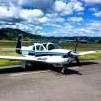Help Troubleshooting Fluctuating Fuel Pressure
-
Members Online
- NickG
- Will.iam
- TCC
- banjo
- DCarlton
- DavePage
- Niko182
- WilliamR
- Wapst
- mluvara
- Skyland
- 303mooney
- eman1200
- DonMuncy
- Planegary
- Hank
- Ragsf15e
- Wigwag
- Jake@BevanAviation
- EricJ
- HelofixR
- LANCECASPER
- 00-Negative
- PT20J
- MikeOH
- Guillaume
- 47U
- GeeBee
- ad5ut
- Stubby
- redbaron1982
- IvanP
- KSMooniac
- FlightSmith
- Gilt
- wombat
- TheAv8r


Recommended Posts